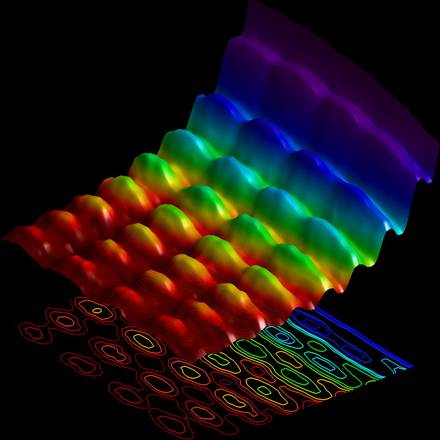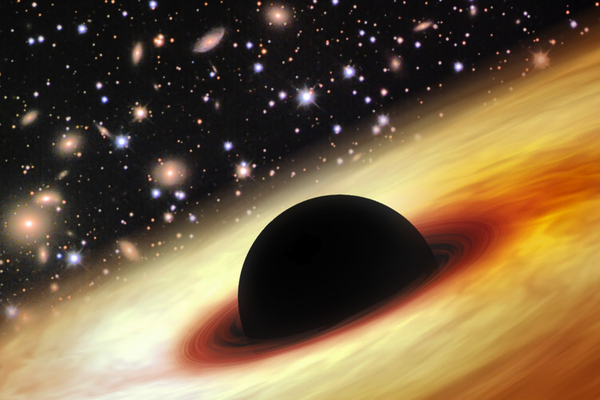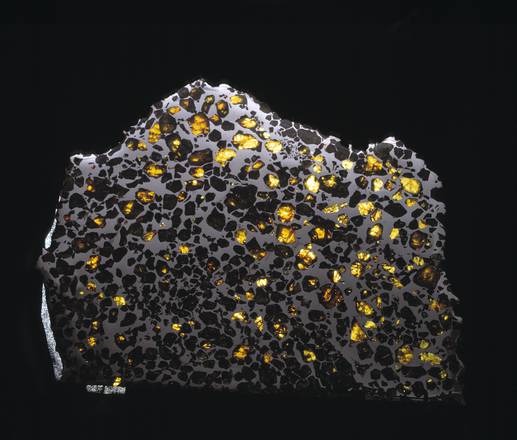Jupiter’s North Pole Unlike Anything Encountered in Solar System
NASA’s Juno spacecraft has sent back the first-ever images of Jupiter’s north pole, taken during the spacecraft’s first flyby of the planet with its instruments switched on. The images show storm systems and weather activity unlike anything previously seen on any of our solar system’s gas-giant planets.
Juno successfully executed the first of 36 orbital flybys on Aug. 27 when the spacecraft came about 2,500 miles (4,200 kilometers) above Jupiter’s swirling clouds. The download of six megabytes of data collected during the six-hour transit, from above Jupiter’s north pole to below its south pole, took one-and-a-half days. While analysis of this first data collection is ongoing, some unique discoveries have already made themselves visible.
One of the most notable findings of these first-ever pictures of Jupiter’s north and south poles is something that the JunoCam imager did not see.
Along with JunoCam snapping pictures during the flyby, all eight of Juno’s science instruments were energized and collecting data. The Jovian Infrared Auroral Mapper (JIRAM), supplied by the Italian Space Agency, acquired some remarkable images of Jupiter at its north and south polar regions in infrared wavelengths.
Juno successfully executed the first of 36 orbital flybys on Aug. 27 when the spacecraft came about 2,500 miles (4,200 kilometers) above Jupiter’s swirling clouds. The download of six megabytes of data collected during the six-hour transit, from above Jupiter’s north pole to below its south pole, took one-and-a-half days. While analysis of this first data collection is ongoing, some unique discoveries have already made themselves visible.
One of the most notable findings of these first-ever pictures of Jupiter’s north and south poles is something that the JunoCam imager did not see.
Along with JunoCam snapping pictures during the flyby, all eight of Juno’s science instruments were energized and collecting data. The Jovian Infrared Auroral Mapper (JIRAM), supplied by the Italian Space Agency, acquired some remarkable images of Jupiter at its north and south polar regions in infrared wavelengths.
The Effect of Orbital Configuration on the Possible Climates and Habitability of Kepler-62f
Prebiotic chemicals—amino acid and phosphorus—in the coma of comet 67P/Churyumov-Gerasimenko
Scientists Talk Privately About Creating a Synthetic Human Genome
Scientists are now contemplating the fabrication of a human genome, meaning they would use chemicals to manufacture all the DNA contained in human chromosomes.
The prospect is spurring both intrigue and concern in the life sciences community because it might be possible, such as through cloning, to use a synthetic genome to create human beings without biological parents.
While the project is still in the idea phase, and also involves efforts to improve DNA synthesis in general, it was discussed at a closed-door meeting on Tuesday at Harvard Medical School in Boston. The nearly 150 attendees were told not to contact the news media or to post on Twitter during the meeting.
Organizers said the project could have a big scientific payoff and would be a follow-up to the original Human Genome Project, which was aimed at reading the sequence of the three billion chemical letters in the DNA blueprint of human life. The new project, by contrast, would involve not reading, but rather writing the human genome — synthesizing all three billion units from chemicals.
But such an attempt would raise numerous ethical issues. Could scientists create humans with certain kinds of traits, perhaps people born and bred to be soldiers? Or might it be possible to make copies of specific people?
George Church, a professor of genetics at Harvard Medical School and an organizer of the proposed project, said there had been a misunderstanding. The project was not aimed at creating people, just cells, and would not be restricted to human genomes, he said. Rather it would aim to improve the ability to synthesize DNA in general, which could be applied to various animals, plants and microbes.
More than 1,200 new planets discovered through Nasa's Kepler space telescope
Nasa added more than 1,200 new planets to the known galaxy on Tuesday, more than doubling the number of confirmed planets orbiting alien stars.
Revealing data from the Kepler space telescope, the astronomers said that the discovery is a step toward finding Earth-like planets.
Analysis on data from Kepler found that 1,284 candidates have a 99% chance of being a planet, of 4,302 potential planets detected by the telescope. Kepler searches in particular for planets in the “habitable zone” – close enough to a star for water to pool on the surface of a planet. Not so close that the star scorches water out of existence, as on Mercury, and not so far that water only persists as ice, as on Pluto.
The new research has added “nine more planets to this exoplanet hall of fame,” she said, using the term for planets that orbit stars outside the solar system. The findings make 21 total exoplanets known to be about the same size and orbit as the Earth to the sun.
Revealing data from the Kepler space telescope, the astronomers said that the discovery is a step toward finding Earth-like planets.
Analysis on data from Kepler found that 1,284 candidates have a 99% chance of being a planet, of 4,302 potential planets detected by the telescope. Kepler searches in particular for planets in the “habitable zone” – close enough to a star for water to pool on the surface of a planet. Not so close that the star scorches water out of existence, as on Mercury, and not so far that water only persists as ice, as on Pluto.
The new research has added “nine more planets to this exoplanet hall of fame,” she said, using the term for planets that orbit stars outside the solar system. The findings make 21 total exoplanets known to be about the same size and orbit as the Earth to the sun.
Synthetic microbe lives with fewer than 500 genes.
Known as Syn 3.0, the new organism has a genome whittled down to the bare essentials needed to survive and reproduce, just 473 genes. “It’s a tour de force,” says George Church, a synthetic biologist at Harvard University.
The microbe’s streamlined genetic structure excites evolutionary biologists and biotechnologists, who anticipate adding genes back to it one by one to study their effects. “It’s an important step to creating a living cell where the genome is fully defined,” says synthetic biologist Chris Voigt of the Massachusetts Institute of Technology in Cambridge. But Voigt and others note that this complete definition remains a ways off, because the function of 149 of Syn 3.0’s genes—roughly one-third— remains unknown. Investigators’ first task is to probe the roles of those genes, which promise new insights into the basic biology of life.
As Syn 3.0’s name suggests, it’s not the first synthetic life made by Venter, who heads the J. Craig Venter Institute (JCVI) and is a founder of Synthetic Genomics, a biotech company, both in San Diego, California.
In 2010, Venter’s team reported that they had synthesized the sole chromosome of Mycoplasma mycoides—a bacterium with a relatively small genome—and transplanted it into a separate mycoplasma called M. capricolum, from which they had previously extracted the DNA.

C’è acqua sulla superficie di Cerere
Scoperta dal team della missione Dawn della Nasa. Fondamentali per individuarla sono state le osservazioni condotte dallo spettrometro italiano VIR, fornito dall’agenzia Spaziale Italiana (ASI) sotto la guida scientifica di Maria Cristina De Sanctis dell’INAF-IAPS di Roma.
«VIR – commenta la Responsabile di Osservazione dell’Universo dell’Agenzia Spaziale Italiana, Barbara Negri – è uno strumento che opera nel visibile e nell’infrarosso per il quale l’Italia possiede una leadership scientifica ed industriale riconosciuta a livello internazionale. Questa tipologia di strumento è stata impiegata con successo su altre missioni di esplorazione del Sistema solare tra le quali Cassini, Rosetta e Venus Express e ha fornito dati fondamentali per lo studio dei corpi celesti osservati e per la comprensione della loro origine».
Il team di Dawn ha anche completato una mappa a colori migliorata della superficie di Cerere che mette in evidenza la diversità di materiale che la compone e il suo rapporto con la morfologia del pianeta nano. In più, grazie ai primi dati dello strumento Gamma Ray and Neutron Detector (GRaND), ha individuato concentrazioni di idrogeno maggiori in prossimità dei poli. Poiché l’idrogeno è il principale costituente dell’acqua, questa informazione rafforza lo scenario della presenza di ghiaccio d’acqua in prossimità della superficie nelle regioni polari di Cerere.
«VIR – commenta la Responsabile di Osservazione dell’Universo dell’Agenzia Spaziale Italiana, Barbara Negri – è uno strumento che opera nel visibile e nell’infrarosso per il quale l’Italia possiede una leadership scientifica ed industriale riconosciuta a livello internazionale. Questa tipologia di strumento è stata impiegata con successo su altre missioni di esplorazione del Sistema solare tra le quali Cassini, Rosetta e Venus Express e ha fornito dati fondamentali per lo studio dei corpi celesti osservati e per la comprensione della loro origine».
Il team di Dawn ha anche completato una mappa a colori migliorata della superficie di Cerere che mette in evidenza la diversità di materiale che la compone e il suo rapporto con la morfologia del pianeta nano. In più, grazie ai primi dati dello strumento Gamma Ray and Neutron Detector (GRaND), ha individuato concentrazioni di idrogeno maggiori in prossimità dei poli. Poiché l’idrogeno è il principale costituente dell’acqua, questa informazione rafforza lo scenario della presenza di ghiaccio d’acqua in prossimità della superficie nelle regioni polari di Cerere.
Scoperta una piramide sul Pianeta nano Cerere, grazie alla Sonda Dawn
Sul pianeta nano Cerere, grazie alla sonda Dawn, è stata trovata un’enorme piramide, e la NASA ha individuato un’enorme piramide in una piatta, come possiamo vedere dallo scatto del Jet Propulsion Laboratory della NASA.
Nei pressi delle due grosse macchie luminose, ora ne sono state individuate altre 8 più piccole e meno evidenti (la macchia più grande misura circa 10 chilometri di diametro) tutte composte da acqua ghiacciata e sale che riflettono la luce del Sole. A non molta distanza dalle macchie luminose è stata invece trovata questa enorme piramide, che stando alle rilevazioni all’infrarosso sarebbe alta non meno di 6 chilometri: curioso per un pianeta piatto, fatta eccezione per gli impatti dei crateri! La NASA sta ancora indagando, ma si potrebbe trattare di un vulcano spento da milioni di anni.
La sonda Messenger pronta all'impatto con Mercurio
Oggi 30 aprile la sonda Messenger cadrà sulla superficie del pianeta alla velocità di 3,91 chilometri al secondo. In questo modo si concluderà la prima missione entrata in orbita intorno al pianeta più vicino al Sole.
Messenger ha rivelato molti segreti di Mercurio, fra i più importanti vi è la scoperta del ghiaccio nelle regioni polari perennemente in ombra del pianeta. Il ghiaccio coprirebbe un'area delle dimensioni di Washington e avrebbe lo spessore di oltre tre chilometri. Una scoperta che, secondo gli esperti, aiuta a chiarire anche come acqua e mattoni della vita siano arrivati nei pianeti interni del Sistema Solate, inclusa la Terra.
''L'acqua conservata nei crateri da impatto delle regioni polari di Mercurio probabilmente è stata 'consegnata' da comete e asteroidi che ne erano ricchi'' ha detto il responsabile scientifico della missione, Sean Solomon, della Columbia University di New York.
--------------------------------------------------------------------------
Immortalata la doppia natura della luce
Per la prima volta è stato fotografato il volto 'bifronte' della luce: l'istantanea mostra la luce sia come particella sia come onda. L'esperimento, pubblicato sulla rivista Nature Communications, avvicina i computer quantistici e si deve al gruppo coordinato dall'italiano Fabrizio Carbone, del Politecnico di Losanna.
--------------------------------------------------------------------------
Scoperto buco nero 'impossibile': antichissimo e gigantesco, un enigma per l'astrofisica
Xue-Bing Wu, dell'Università di Pechino, ha scovato un gigantesco buco nero con una massa 12 miliardi di volte quella del Sole e nato all'alba dell'Universo, appena 900 milioni di anni dopo il Big Bang.
I buchi neri crescono 'mangiando' i materiali che li circondano, polveri o stelle, e per essere così grande SDSS J0100 + 2802 deve aver mangiato tanto e molto in fretta. Non solo è uno dei più grandi buchi neri che conosciamo, ma è anche molto giovane. Un rapidità di 'ingrassare' che mette in discussione molte teorie che spiegano la crescita di questi oggetti.
Esistono infatti in queste teorie dei limiti ben precisi, superati i quali il buco nero 'collassa': "una sorta di limite di 'indigestione'".
Il quasar SDSS J0100 + 2802 è un vero gigante dell'universo: con una luminosità pari a 420.000 miliardi di volte quella del nostro Sole, questo nuovo quasar è 7 volte più luminoso di quello ad oggi più distante.
I buchi neri crescono 'mangiando' i materiali che li circondano, polveri o stelle, e per essere così grande SDSS J0100 + 2802 deve aver mangiato tanto e molto in fretta. Non solo è uno dei più grandi buchi neri che conosciamo, ma è anche molto giovane. Un rapidità di 'ingrassare' che mette in discussione molte teorie che spiegano la crescita di questi oggetti.
Esistono infatti in queste teorie dei limiti ben precisi, superati i quali il buco nero 'collassa': "una sorta di limite di 'indigestione'".
Il quasar SDSS J0100 + 2802 è un vero gigante dell'universo: con una luminosità pari a 420.000 miliardi di volte quella del nostro Sole, questo nuovo quasar è 7 volte più luminoso di quello ad oggi più distante.
--------------------------------------------------------------------------
- Svelata la "sinfonia" del Dna. Pubblicato su Nature.
Soprannominato anche "il secondo codice genetico", l'epigenoma è l'insieme degli interruttori che accendono o spengono i singoli geni. Mentre il Dna di ciascuno di noi contiene circa 25mila geni, resta fisso per tutta la vita e non muta se guardiamo alle cellule del cervello, del cuore o della pelle, l'epigenoma è la parte variabile, fluttuante del nostro organismo.
--------------------------------------------------------------------------
- Sonda Kepler trova antico sistema solare con 5 sosia della Terra (The Astrophysical Journal, 28 gennaio)
Kepler-444 è una stella formatasi 11,2 miliardi di anni fa, al tempo in cui l’Universo aveva meno del 20% della sua età attuale. Di fatto, è il più antico Sistema Solare conosciuto a presentare caratteristiche tanto simili a quello che ben conosciamo: cinque pianeti di dimensione paragonabile a Terra.
La scoperta, annunciata il 28 gennaio su The Astrophysical Journal, si deve grazie al telescopio spaziale Kepler della Nasa e il team di ricercatori dell’Università di Birmingham.
--------------------------------------------------------------------------
- Fotografata la 'morte' del campo magnetico di un asteroide (ANSA, 22 gennaio, 10:53)
















Nessun commento:
Posta un commento